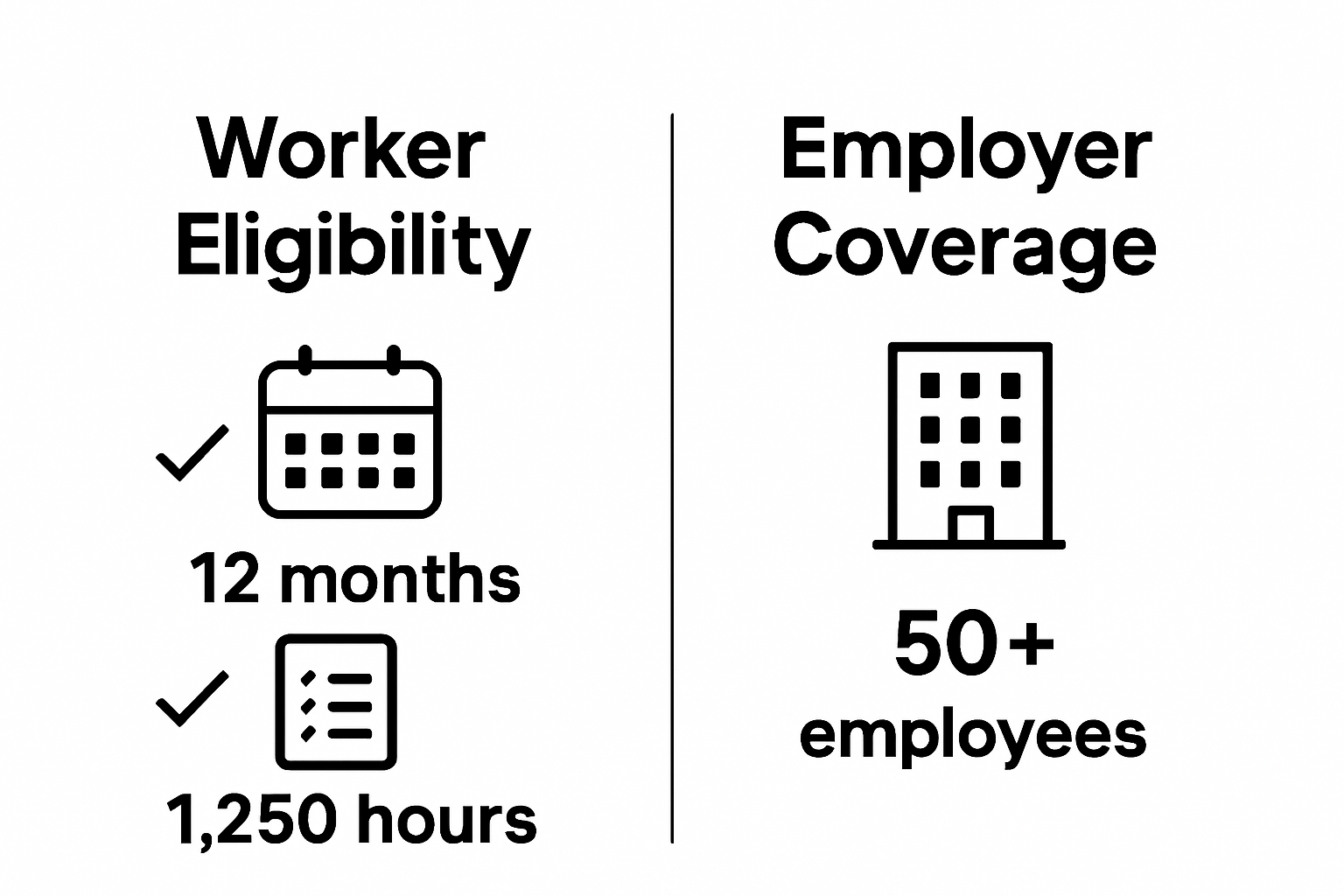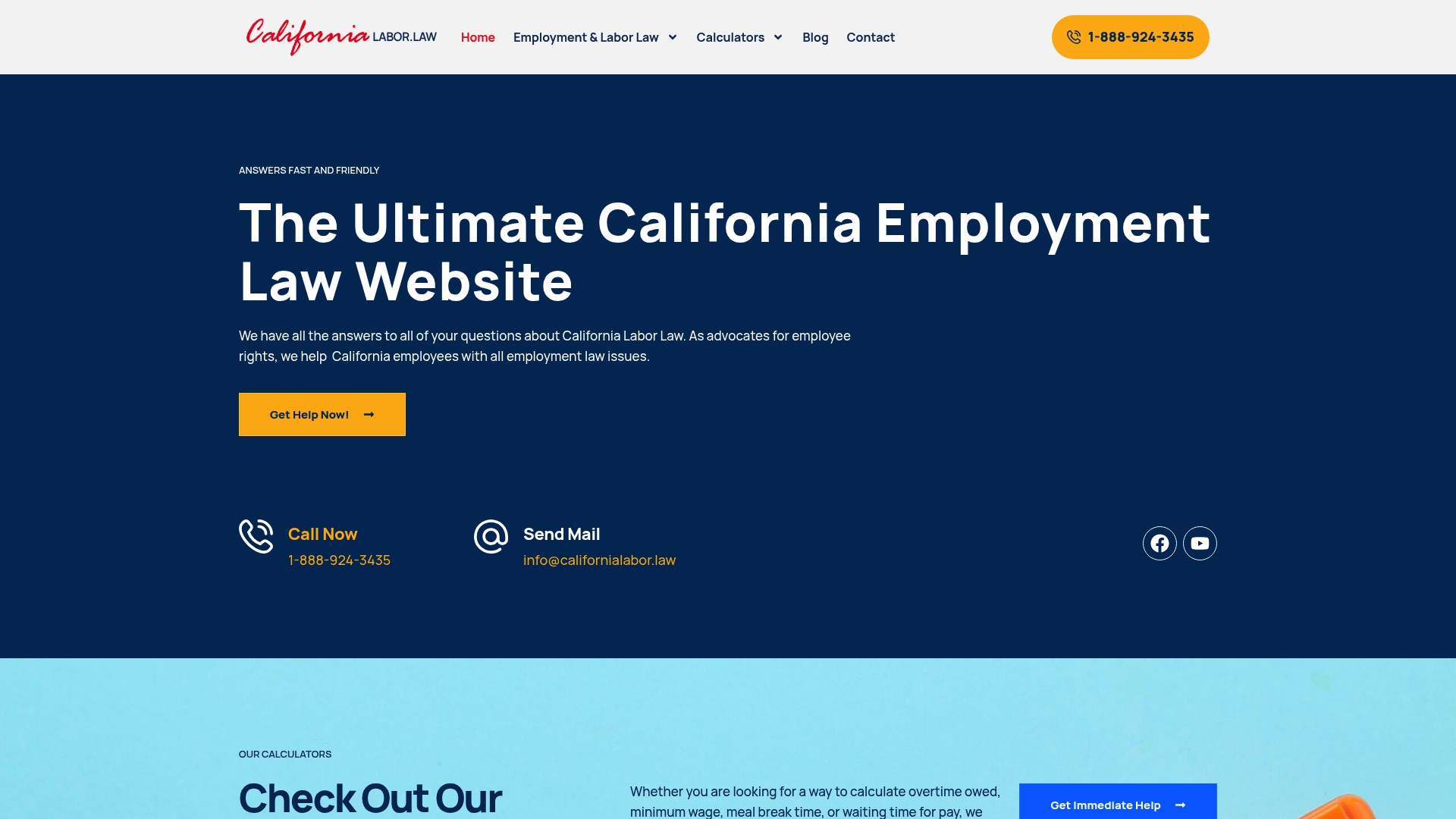Most people think missing work for a new baby or a health crisis means your job could be at risk, but the truth is, over 60 million Americans are covered by the Family and Medical Leave Act every year. So while it may sound like just more paperwork, these protections actually guarantee you can take up to 12 weeks off and still keep your job and health insurance. Most folks do not realize how much power the FMLA gives you when life throws a curveball.
What is the Family and Medical Leave Act?
The Family and Medical Leave Act (FMLA) represents a critical federal labor law designed to protect workers during significant life and health circumstances. Enacted in 1993, this legislation provides eligible employees with essential job protections and unpaid leave options when confronting substantial personal or family medical challenges.
Understanding the Core Purpose
At its foundation, the FMLA recognizes that workers should not be forced to choose between maintaining their employment and addressing critical personal or family health needs. The law ensures that eligible employees can take a reasonable time away from work without risking their job security or health insurance coverage. According to the U.S. Department of Labor, the act applies to companies with 50 or more employees and provides specific protections for workers facing various life circumstances.
Qualifying Conditions for Leave
The FMLA covers several important life events and health situations where employees might need extended time away from work. These qualifying conditions include:
- Birth and care of a newborn child
- Adoption or foster care placement of a child
- Care for an immediate family member with a serious health condition
- Personal serious health condition that prevents work performance
Typically, eligible employees can take up to 12 workweeks of unpaid leave within a 12-month period while maintaining their group health insurance and job protection. This means when employees return from FMLA leave, they must be restored to their original job or an equivalent position with comparable pay, benefits, and working conditions.
Eligibility Requirements
Not all employees automatically qualify for FMLA protections. To be eligible, workers must meet specific criteria
 :
:
- Work for a covered employer (typically companies with 50+ employees)
- Have worked for the employer for at least 12 months
- Completed a minimum of 1,250 hours of service in the 12 months before leave
- Work at a location where the employer has at least 50 employees within a 75-mile radius
Understanding these parameters helps workers recognize their rights and potential access to job-protected leave during critical personal and family moments.
Here is a table summarizing the eligibility requirements for the Family and Medical Leave Act to help clarify who qualifies for protection.
| Requirement | Explanation |
|---|---|
| Covered Employer | Must work for a company with 50 or more employees |
| Length of Employment | Must have worked for the employer for at least 12 months |
| Hours Worked | Must have completed at least 1,250 hours of service in past 12 months |
| Employee Location | Must work at a location where employer has 50+ employees within 75 miles |

Why is the Family and Medical Leave Act Important?
The Family and Medical Leave Act serves as a critical safeguard for workers navigating complex personal and medical challenges. By providing essential job protections and leave opportunities, this legislation addresses fundamental human needs that intersect with professional responsibilities.
Protecting Worker Economic Security
Research from the National Bureau of Economic Research demonstrates that the FMLA plays a crucial role in preventing economic hardship for workers confronting significant life events. Without such protections, employees would face devastating choices between maintaining their livelihood and addressing critical personal or family health needs. The act ensures that workers can take necessary time away from work without risking permanent job loss or complete financial instability.
Supporting Family and Health Dynamics
The FMLA recognizes that employees are not merely workers but individuals with complex personal responsibilities. By providing job-protected leave, the legislation acknowledges that personal health and family care are fundamental human requirements that should not compromise professional standing. This approach supports several critical aspects of worker well-being:
- Enables parents to bond with newborn or newly adopted children
- Allows employees to provide critical care for seriously ill family members
- Supports workers managing their own serious health conditions
- Reduces workplace stress related to potential job loss during personal crises
Promoting Workplace Equity and Mental Health
Beyond immediate legal protections, the FMLA represents a broader commitment to workplace equity and employee mental health. By mandating job protection during challenging life moments, the act helps create a more humane and compassionate work environment. Employees can focus on recovery, family care, and personal wellness without the additional stress of potential employment termination.
The legislation fundamentally recognizes that workers are complete human beings with needs that extend beyond their professional roles. By providing structured, predictable leave options, the FMLA helps balance professional expectations with essential personal and family requirements, ultimately creating a more supportive and sustainable workplace ecosystem.
How the Family and Medical Leave Act Works
The Family and Medical Leave Act operates through a comprehensive framework designed to balance employee needs with employer responsibilities. This intricate system provides structured protections that enable workers to address critical personal and family health situations while maintaining their professional standing.
Leave Request and Notification Process
According to the U.S. Department of Labor, the FMLA implementation begins with a formal notification process. Employees must provide 30-day advance notice for foreseeable events like planned medical treatments or childbirth. For unexpected medical emergencies, workers must notify their employer as soon as practicable. Employers are then required to respond by providing detailed information about the employee’s FMLA eligibility and specific leave requirements.
Job Protection and Benefits Maintenance
The core mechanism of the FMLA ensures that eligible employees can take up to 12 workweeks of unpaid leave within a 12-month period without risking their job or health insurance coverage. During this leave, employers must maintain the employee’s group health insurance under the same terms and conditions as if the worker had not taken leave. When employees return, they are legally entitled to:
- Restoration to their original job
- An equivalent position with similar pay and benefits
- Preservation of accumulated seniority and employment benefits
- Protection from potential retaliation for taking FMLA leave
Verification and Compliance Procedures
To prevent potential misuse, the FMLA includes rigorous verification mechanisms. Employers can request medical certification from healthcare providers to validate the need for leave. This documentation must confirm the serious health condition, expected duration, and potential treatment requirements. Important documentation includes:
- Detailed medical certifications
- Periodic status reports
- Professional medical opinions verifying the need for leave
These procedural safeguards ensure that the FMLA remains a balanced mechanism protecting both employee rights and employer interests. By establishing clear guidelines and transparent processes, the legislation creates a structured approach to managing complex personal and medical circumstances within the professional environment.
Key Concepts of the Family and Medical Leave Act
The Family and Medical Leave Act encompasses several fundamental principles designed to protect workers while providing flexible leave options during critical life circumstances. Understanding these core concepts helps employees and employers navigate the complexities of workplace leave regulations.
Defining Serious Health Conditions
According to the U.S. Department of Labor, the FMLA defines serious health conditions as illnesses, injuries, impairments, or physical or mental conditions that involve either inpatient care or continuing treatment by a healthcare provider. This broad definition ensures comprehensive coverage for various medical situations that significantly impact an individual’s ability to work.
Serious health conditions can include:
- Chronic conditions requiring periodic medical treatments
- Permanent or long-term conditions with potential complications
- Conditions requiring multiple medical interventions
- Conditions that temporarily prevent an employee from performing job functions
Protected Leave Categories
The FMLA establishes specific categories of protected leave that enable employees to address critical personal and family needs without jeopardizing their employment. These protected categories encompass a range of significant life events and health challenges:
- Birth and care of a newborn child
- Adoption or foster care placement of a child
- Care for an immediate family member with a serious health condition
- Personal serious health condition preventing work performance
- Military family leave for specific military-related circumstances
Employer and Employee Responsibilities
Successful implementation of the FMLA requires clear understanding and cooperation between employers and employees. Key responsibilities include:
- Employers must maintain employee health benefits during leave
- Employees must provide appropriate medical certification
- Employers must restore employees to equivalent positions after leave
- Employees must follow company procedures for leave requests
These foundational concepts demonstrate the FMLA’s commitment to balancing workplace productivity with essential human needs.
The following table provides an overview of the main types of situations and leave categories protected under the Family and Medical Leave Act.
| Protected Leave Category | Description |
|---|---|
| Birth and Care of Newborn Child | Leave for the birth and care of a newborn child |
| Adoption or Foster Care Placement | Leave for adopting or placing a child in foster care |
| Care for Immediate Family Member | Leave to care for a spouse, child, or parent with a serious health condition |
| Employee’s Own Serious Health Condition | Leave due to employee’s own serious health condition that prevents work |
| Military Family Leave | Leave for certain military-related family circumstances |
By establishing clear guidelines and protections, the legislation creates a framework that recognizes employees as complete individuals with complex personal and professional responsibilities.
Are You Facing an FMLA Challenge in California?
If understanding your rights under the Family and Medical Leave Act feels overwhelming or you worry about job protection during a health crisis, you are not alone. Many California employees wonder if they qualify for leave or what happens if an employer violates their FMLA rights. Unclear eligibility rules, documentation requirements, and fear of retaliation can stop you from taking the leave you need.

Take control of your situation today by visiting California Labor Law for clear guidance tailored to California workers. Our free resources include insights on FMLA qualifiers, examples of protected leave, and direct access to legal advocates. If you are uncertain about whether your employer is following the law or if you are worried about retaliation or wrongful termination, reach out now by calling through our easy contact form. Acting quickly protects your health, job, and financial security, Find the answers you need and stand up for your rights by calling us today 1-888-924-3435.
Frequently Asked Questions
What is the Family and Medical Leave Act (FMLA)?
The Family and Medical Leave Act (FMLA) is a federal law enacted in 1993 that provides eligible employees with unpaid leave and job protection for certain family and medical reasons without risking their employment.
Who is eligible for FMLA leave?
To be eligible for FMLA leave, an employee must work for a covered employer, have worked for at least 12 months, completed a minimum of 1,250 hours of service in the last 12 months, and work at a location where the employer has at least 50 employees within a 75-mile radius.
What types of situations qualify for FMLA leave?
FMLA leave can be taken for several qualifying situations, including the birth and care of a newborn, adoption or foster care placement, caring for an immediate family member with a serious health condition, or the employee’s own serious health condition that prevents them from working.
How does the job protection work under FMLA?
Under the FMLA, eligible employees are entitled to return to their original job or an equivalent job with similar pay and benefits after taking up to 12 workweeks of unpaid leave within a 12-month period, ensuring job protection and maintaining health insurance coverage during the leave.


